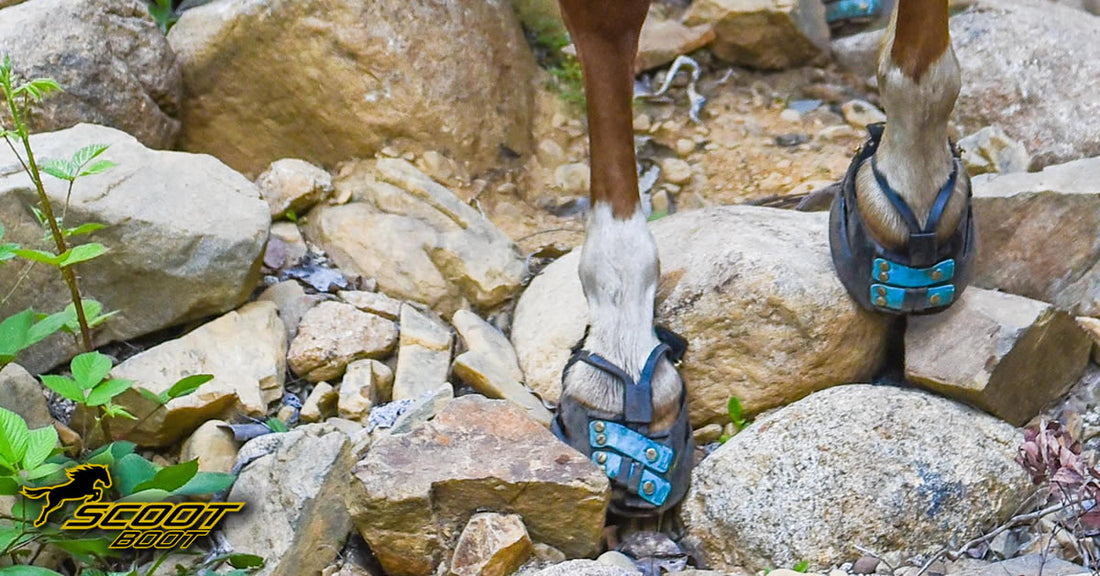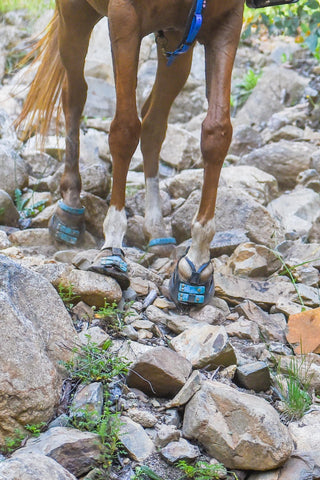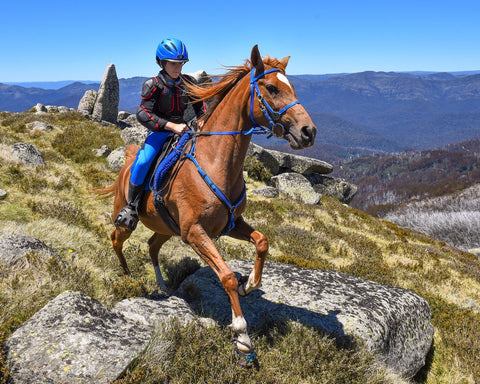
A Review of Scoot Boot Mud Straps - by Rob Featonby
Share
I recently had the opportunity to try some of the new Scoot Boots mud straps.
These are a few observations of what we found and what we did in them.
Looking at the mud straps they are very sleek ,smooth and thin with a low profile. They are very flexible and have some give. Fitting them to the boots was very easy and putting the boots on the horse was still easy, but is a bit more fiddly than the regular pastern straps .
The boots I used them on had regular gaiters or endurance gaiters fitted and the mud strap sat between these and the pastern. The Arabians that we tried them on have boots ranging in size from 0 to 3.
The first ride out was a trail ride with plenty of steep hills and lots of rocky climbs. There were a few muddy sections but nothing serious, as well as some sections of faster canters. It was great to see there were absolutely no rubs or lost boots so it was a good start!

The next ride out we found some really thick and sticky heavy mud about a foot deep or more. The boots were making lots of sucking noises but never came off.
Our next test we did is a killer for boots, especially rear boots. Riding through muddy puddles then straight away cantering up a very, very steep hill. If boots are going to come off this will usually do the trick, especially on the rear feet propelling the horse. The boots stayed on - perfect! After the mud we rode a fair distance at speed to a reservoir and swam the horses. Even when really muddy, the mud straps didn't rub. We didn't lose any boots swimming or on the quick ride home when they were wet.

To really try the mud straps out the following 2 weekends were spent in the Victorian High Country (Australia), where the Man from Snowy River movie was shot. It is very rugged country! Our first ride out was up the Howqua River on a trail with huge amounts of river crossings - some were up to a metre deep and flowing very fast. Most of these crossings have a base of very large river rocks, the kind of rocks that will will rip ill-fitting boots straight off! They also rip off a lot of steel shoes too!

The boots are constantly wet on the trail and there are some steep hill sections, as well as fast tight, twisty single trail sections with rocky footing and slippery mud in places.To really test the boots, I ran my horse in boots about a size and a half larger than they should be and without shims on the rears with the mud straps. The front hooves were with regular pastern strap boots and again a larger size boot to compare the performances. The mud straps performed flawlessly with no boot losses or rubs. The front feet using regular pastern straps didn't fare as well with the incorrect larger boots and one was lost. This was an interesting test!
Next day was more river crossings, very steep hills, a few log jumps, some mud and a photo shoot at a crossing with a nice base to ride through at speed . Again larger boots were fitted on my horse running with mud straps on the rears. Again, the mud straps were flawless! The horses without mud straps had two boots come off in the high speed crossings .
The following weekend we rode up Mt Stirling then down to Mirimbah. This ride is all about hill work, with lots of climbing up and down, lots of rocks, plenty of underbrush and again rocky creek crossings with some muddy sections thrown in! This time, the mud straps were fitted to the front boots of my sons’ horse. The mud straps didn't disappoint! They were really tested in very rocky trail sections which really flexed the boots and tested the mud straps’ connection to the front toe strap.

In the space of 3 weekends using mud straps we had ridden over a hundred kilometres of some very demanding rugged terrain. There was not a single lost boot or rub with the mud straps!
It was a good test running larger boots with the mud straps. My horse has larger heel bulbs so I either have to run tight boots (risking rubs on bulbs) or over coronet bands at the back or use shims in larger boots. The mud straps held the large boots in place and they didn't twist or rub . This should make a difference for horses with marginal boot fit or irregular shaped feet. It could also means horses with seasonal hoof size changes could run the one larger size year round. It may also mean you could go to a slightly longer trim cycle saving some money on trims per year. Another advantage of the mud straps is they allow the removal of the pastern strap fixing bolts, which may be an advantage for horses whose feet travel close together and brushing.
All of these benefits would also be complemented if the newer boot design with the side vent at the bottom is used .
I think the little extra cost and fiddling around involved in running the mud straps is far outweighed by the benefits of a more secure boot in demanding terrain and having a more reliable rub free fit on feet that are not exactly perfect size or shape.
I will be running mud straps on my horses in my favourite colours as soon as they are available!
Note: Some of the photos with this review may not have the mud straps visible or be of a horse with them on but they are all taken of a horse with them on or from a horse with them on riding the same track .
Building a Supportive Barefoot Community
The team at Scoot Boot believe passionately in the barefoot horse and strive to build a supportive community of barefoot horse lovers.
Find more information about using Scoot Boots here.
 Rob Featonby lives in country Victoria, Australia. He practices natural horse methods, dabbles in endurance riding and is a keen photographer. Rob loves riding with his son and friends, and loves extreme trail riding and exploring Australian forests.
Rob Featonby lives in country Victoria, Australia. He practices natural horse methods, dabbles in endurance riding and is a keen photographer. Rob loves riding with his son and friends, and loves extreme trail riding and exploring Australian forests.
